Inventing



Building better devices, better treatments, better outcomes that span generations and health challenges
Fall 2024 • cse.umn.edu
ADMINISTRATION
Dean
Andrew Alleyne
Associate Dean, Academic Affairs
Beth Stadler
Associate Dean, Research
Joseph Konstan
Associate Dean, Undergraduate Programs
David Blank
Associate Dean, Graduate Programs
Victor Barocas
EDITORIAL STAFF
Communications and Marketing Director
Rhonda Zurn
Managing Editor
Pauline Oo
Designer Sara Specht
I nventing Tomorrow is published by the College of Science and Engineering at the University of Minnesota Twin Cities for our alumni and friends.
Send letters to the editor: 105 Walter Library 117 Pleasant Street SE Minneapolis, MN 55455
This publication is available in alternative formats upon request. Call 612-624-8257.
NEED A PAST ISSUE?
Find it in our online archives at
z.umn.edu/inventingtomorrowarchive
ADDRESS CHANGE?
Email: csemagazine@umn.edu Call: 612-624-8257
© 2024 Regents of the University of Minnesota. All rights reserved.
Recent graduate Huan Liu holds her curved origami model, an enlarged paper version of the metal brain stent she co-designed with Professor Richard James. Their origami-inspired stent unfolds with body heat to reinforce the artery walls and reduce blood flow to an aneurysm.
Photo by Rebecca Slater
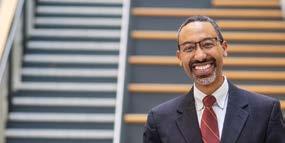
From the first pacemaker to the world’s first heart transplant, the University of Minnesota has a long, proud history of medical innovation. Today, Minnesota has more than 1,000 health-related companies and is known around the world as “Medical Alley” because it has the world’s largest cluster of medical device companies and healthcare organizations. More than a half million people around the world are employed by Minnesota-based health companies. In addition, our state has the most medical device patents per capita.
This presents unparalleled opportunities for the University of Minnesota. In addition to educating the next generation of leaders in these Fortune 500 and startup companies, we are uniquely positioned to move discoveries to the marketplace. Our ecosystem encourages scientists and engineers to work side by side with medical doctors (who are literally located across the street) and industry partners.
Our University’s Technology Commercialization Office brings these new ideas to market. Since 2006, Tech Comm’s Venture Center has helped launch more than 123 medical device and bio/pharma startup companies.
In this issue of Inventing Tomorrow, we highlight a few of our faculty, students, and alumni who are on the cutting edge of discoveries involving the brain, heart, cancer, mental health, and more. Some are using the newest artificial intelligence technology while others are turning to ancient arts, like origami, to find new solutions.
As we look to the future, it’s clear that the synergy among innovation, education, and collaboration at the University of Minnesota will continue to drive advancements in healthcare. The stories in this issue reflect not only individual brilliance but also the collective potential of our community to tackle some of the most pressing health challenges of our time.
The College of Science and Engineering continues to strengthen its partnerships with industry and government. Here are a few recent Twin Cities campus visits from our collaborators.
Medtronic Chairman and CEO Geoff Martha visited campus to speak at the College of Science and Engineering’s Commencement Ceremony for undergraduate students. He also attended a reception with faculty and talked about ways Medtronic—the world’s largest medical device company— could strengthen its partnership with the University of Minnesota.
Several executives from Dow and academic leaders from the University of Minnesota met to learn more about future collaborations to improve the quality of life for people and the planet. Dow Senior Vice President/Chief Technology Officer A.N. Sreeram also gave a seminar on innovation.
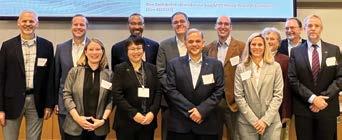
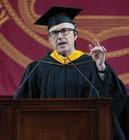
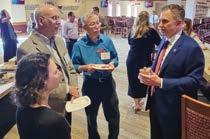
U.S. Department of Agriculture Secretary Tom Vilsack (second from left) met with University of Minnesota deans Andrew Alleyne (College of Science and Engineering), Bev Durgan (Extension), and Brian Buhr (College of Food, Agricultural, and Natural Resource Sciences). They discussed the University’s innovations in energy, fuel, and agriculture.
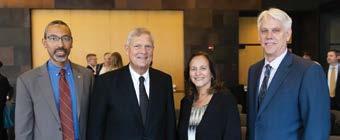
“Our project is about making underwater robots more effective tools for scientists and conservationists.”
–
Junaed Sattar, associate professor, Department of Computer Science and Engineering and the Minnesota Robotics Institute
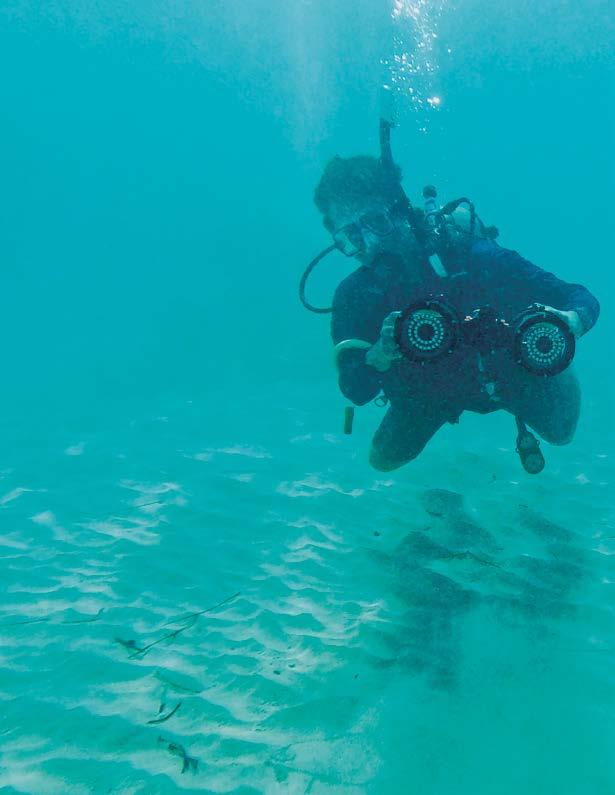
AI-powered underwater robots developed at the University of Minnesota are revolutionizing marine conservation by accurately identifying and tracking invasive species with improved vision and localization. The robot, named MeCO, is an open-source project, and researchers expect to make it available to the research community and the public soon under open-source licenses.


Chemists at the University of Minnesota have created a highly reactive chemical compound that has eluded scientists for more than 120 years. The discovery could lead to new drug treatments, safer agricultural products, and better electronics. The next step is to make it widely available to chemists across multiple fields to streamline the creation process. This could help solve important problems by preventing food scarcity and treating illnesses to save lives.
The USDA estimates that $460 million a year is spent to protect crops and gardens from invasive Japanese beetles. Alure, a startup co-founded by alumnus Aditya Prabhu (below) while he was an undergraduate computer engineering student, is testing new ways to eliminate them.
The mesh enclosure attracts beetles using a pheromone-baited scent and exposes them to a low dose of insecticide. So far, Alure has found that 90 seconds on the mesh resulted in 100 percent mortality after 30 minutes. While deadly for the beetles, it is safe for humans and animals.
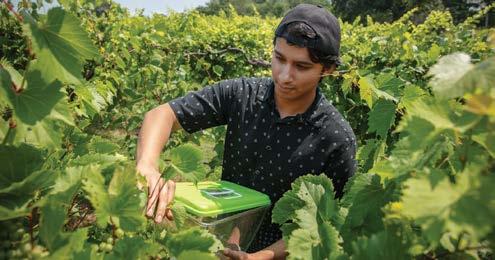
by
z.umn.edu/techdigest
Co-led by two mechanical engineering graduate students, Andrew Alegria and Amey Joshi, a team of University of Minnesota researchers has constructed a robot that uses machine learning to fully automate a complicated microinjection process used in genetic research. The team was able to use this automated robot to manipulate the genetics of multicellular organisms, including fruit fly and zebrafish embryos.
The technology will save labs time and money while enabling them to more easily conduct new, large-scale genetic experiments that were previously not possible using manual techniques. The team is also working to commercialize this technology to make it widely available through the startup company, Objective Biotechnology.









Researchers at the University of Minnesota are partnering with scientists across the country to develop a plan that could safeguard Earth’s endangered biodiversity through low temperature storage on the Moon. The Moon’s permanently shadowed craters are extremely cold and an ideal location for cryogenic preservation without the need for electricity or liquid nitrogen. The study includes mechanical engineering Professor John Bischof, an expert on cryogenic processes. The proposal takes inspiration from the Svalbard Global Seed Vault in Norway, which functions as a backup for the world’s crop biodiversity.
Two University of Minnesota professors and six alumni are among only 114 new members and 21 foreign members to be elected to the National Academy of Engineering (NAE) in 2024. They are Professors Catherine French (Department of Civil, Environmental, and Geo- Engineering) and Timothy Lodge (Department of Chemical Engineering and Materials Science and Department of Chemistry) and alumni Martha Anderson (astrophysics), Patrick Gruber (chemistry), Kei May Lau (physics), Jeffery Puschell (astrophysics), Dawn Tilbury (electrical engineering), and Stéphane Bancel (chemical engineering).

For the first time ever, a team of University of Minnesota researchers, led by physics and astronomy Associate Professor Lindsay Glesener, launched a sounding rocket to study solar flares in real time. The rocket is equipped with an X-ray telescope that gathers precise measurements of this solar phenomenon. Solar flares and their accompanying plasma ejections can cause geomagnetic storms that can have impacts on power grids and communication satellites on Earth. Understanding how these solar flares happen can help us better react in real time to avoid disruptions.
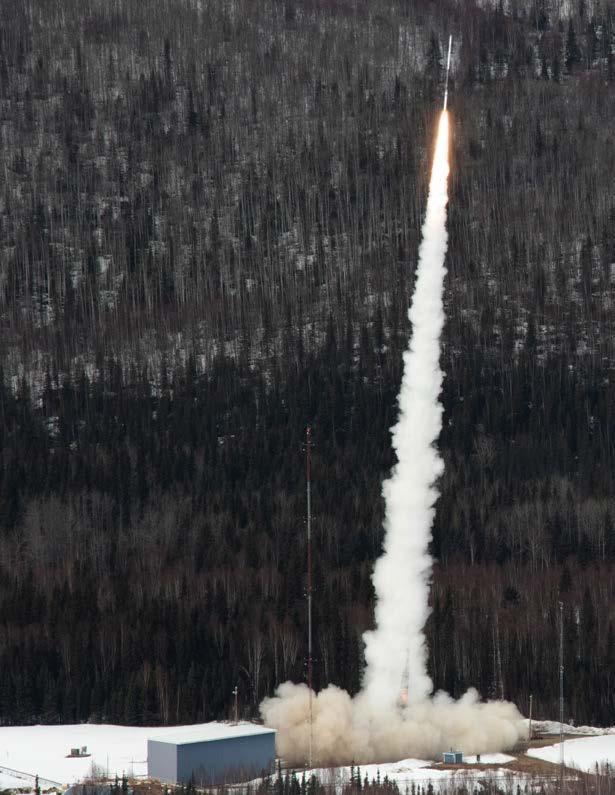
The University of Minnesota is part of a network of universities that are working to develop the next-generation semiconductor workforce to meet national security needs. Sponsored by the Department of Defense, Scalable Asymmetric Lifecycle Engagement (SCALE) will work to develop a talent pipeline and encourage more domestic students to pursue advanced degrees and employment in national security-related fields. The University’s Minnesota Nano Center will play a key role by providing training. The program will also engage industry partners in Minnesota.


z.umn.edu/ techdigest
A new study led by researchers at the University of Minnesota is providing new insights into how next-generation electronics, including memory components in computers, break down or degrade over time. Understanding the reasons for degradation could help improve the efficiency of data storage solutions.
Astronomers and astrophysicists at the University of Minnesota co-led a new study by an international team that will improve the detection of gravitational waves, which are “ripples” in space-time caused by some of the most violent and energetic processes in the Universe.
The research aims to send alerts to other scientists within 30 seconds after the detection, helping to improve the understanding of neutron stars and black holes and how heavy elements, including gold and uranium, are produced.

The University of Minnesota College of Science and Engineering (CSE) has long been a formidable force when it comes to affecting health outcomes.
For instance, the high-performing computing systems that process much of the data that drive today’s smart tools and technology in healthcare and medical products have strong roots in this college. Seymour Cray, called “the father of supercomputing,” earned his bachelor’s degree in electrical engineering in 1949, then a master’s in applied mathematics in 1951.
Earl Bakken, another alumnus, gave us the first transistorized cardiac pacemaker in 1957 and founded Medtronic, where more than 1,000 CSE alumni currently work. Henry Buchwald, who spent more than 50 years on campus as a professor of surgery and biomedical engineering, developed the first implantable infusion pump—a precursor to those in use across the world today.
“In Minnesota, we were always ahead of the times,” said Art Erdman, the Richard C. Jordan Professor of Mechanical Engineering and founding director of the Earl E. Bakken Medical Devices Center, who started his career at CSE in 1971. “We had a high-tech community when I started, as well as folks who could move from that side of things into the medical side. We were also ahead of most other universities in teaming. Innovation is all about relationships and putting together cross-functional teams that are focused and have the same values.”
Today, that collaborative spirit and technological savvy continues.
In CSE, more engineers—like Erdman, who played a key role in the first-of-its-kind low-cost ventilator (p. 28)—and doctors thrive together. The right infrastructure is one reason. The University’s medical school is literally across the street from engineering and science buildings on campus.
Another reason is that federal funding agencies, like the National Institutes of Health and the National Science Foundation, are increasingly encouraging this collaboration across disciplines.
“I think medicine is one of the biggest frontiers for engineering,” said Tay Netoff, who has been on the Department of Biomedical Engineering faculty since 2006. “Medicine for engineering is what the space race was 50 years ago. These are two well-established fields coming together, and we’ve seen a lot of successes.”
In this section
Read how we are making an impact on
›› AI p. 12 ›
›› The Brain p. 14 › ›› The Body p. 18 ›
The Heart p. 20 ›
Cancer p. 22 ›
“
The people we bring together at this college are amazing. They’re making advances, and the impact is real. Health and wellness, or longevity, is about ‘how do we have more years of living well?’
—Joe Konstan, CSE associate dean for research
3,000,000,000
Population with clean water challenges who can benefit from a water-quality sensor that faculty Cara Santelli, Tianhong Cui, Yao-Yi Chiang, Chang Ge, and John Sartori are developing
21
Length of time to finish the Technological Leadership Institute’s Master of Science in Medical Device Innovation months
2
Types of deer head models with removable lymph nodes, printed at Bakken Medical Devices Center, for demo of chronic wasting disease
2.5 micrometers
Size of wildfire particulate matter in drone studies led by researchers Jiarong Hong, Michele Guala, and Hyun Soo Park
Fisetin
Professor Edgar Arriaga was on the UMN–Mayo team that found this natural fruit and vegetable compound destroys cells involved in aging
Professor Jaideep Srivastava’s team studies adherence to continuous positive air pressure and upper airway stimulation therapies for sleep apnea
”
1 day
Time to assemble the genome, synthesize without living cells, and select infectious bacteriophages in Professor Vincent Noireaux’s lab
65+
Age of adults for which Professor Maria Gini’s team is designing conversational agents to mitigate loneliness and social isolation
100,000,000,000,000
Number of bacteria in your gut—Professor Dan Knights uses computational methods to study how modern lifestyles affect our microbiome and risk of diseases
Grant renewal for UMN MRSEC, bringing NSF cumulative total to $79M to advance materials research for multiple applications, including MedTech $18 million
$9.9 million
National Institute on Drug Abuse study co-lead by Professor Suhasa Kodandaramaiah tracks brain changes with addiction
$6.9 million
Multiple grants, including from the American Heart Association, to Professor Will Pomerantz for new epigenetic therapies
Read more.
1,000x
Less energy consumption demonstrated by CSE researchers with a computational random-access memory model, where data never leaves the memory
BY KALIE PLUCHEL
$40
Capital raised by UMN spinoff Fasikl, driving its valuation over $140M, to propel progress in AI-driven neurotherapies million
75%
Neurological MRI scan time reduction by alumnus Burhaneddin Yaman in Mehmet Akçakaya’s lab with AI algorithm; 50% less time for cardiac scans
Ask our many experts who are using artificial intelligence or machine learning to improve medical outcomes.
Fasikl, a startup co-founded by Associate Professor Zhi Yang, is unlocking new possibilities for individuals with physical disabilities. Two devices— one easing tremors for people with Parkinson’s and another improving mind-controlled robotic prosthetics—have
achieved U.S. FDA “breakthrough device” status. Fasikl has licensed five IPs through the University of Minnesota. Based on more than a decade of research, these AI therapies are undergoing pivotal clinical trials with 12 hospitals, including eight in the U.S. for global regulatory clearance.
More than a decade ago, industrial and systems engineering Professor Zhaosong Lu recognized the growing need for machine learning models and saw how his optimization expertise could enhance and improve the field.
Recently, Lu’s team explored how AI could be used to predict properties of tiny materials. Applications include nanomedicine or nanotech that administers
drugs to fight diseases such as cancer and AIDS. The researchers showed that they could predict the makeup and behavior of nanostructures, while minimizing side effects.
Lu’s research also impacts future nanoscientists. He uses it as case studies to complement engineering and science courses in a handful of colleges in the Midwest and East Coast.
Computer scientists around the world are tapping AI for all sorts of solutions. Assistant Professor Yoga Varatharajah is one of them. He is looking to alleviate burnout in medicine.
“Clinicians already have enough to deal with, and they often perform tasks they’re overqualified for, like reading scans and writing reports, leading to burnout and potential errors,” Varatharajah explains.
His research focuses on AI methods to interpret tests, optimize treatment decisions, and improve patient outcomes. He developed a new graph-based machine learning method to model brain activity that can detect conditions like Alzheimer’s and epilepsy very early using inexpensive EEG tests. He is also training students and professionals to ensure that AI applications in medicine are robust and trustworthy.
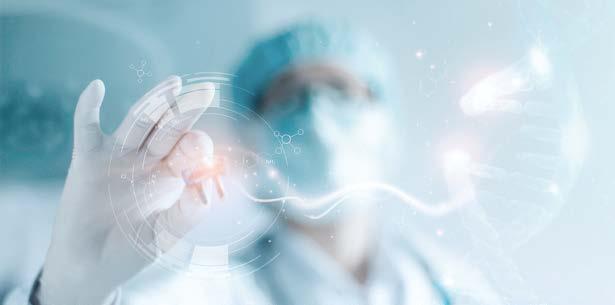
With the emergence of publicly available AI tools like ChatGPT, the world is consumed with the possibilities and risks that AI brings to the table.
Researchers in the University of Minnesota GroupLens research lab have combined computer science and humancentered AI methods to advance the theory and practice of social computing. Their projects include recommender
Average daily time teens spend on social media ~4.8 hours
systems, online recovery communities for addiction and alcoholism, and tools for mental health.
Assistant Professor Stevie Chancellor’s research has public health implications. Chancellor and her team did a firstof-its-kind study of TikTok, AI, and its unique algorithm. It found that the social media platform can serve as both a haven and a hindrance for users struggling with their mental state.
“While developing an AI solution to figure out when someone is in crisis and when to intervene, all of the decisions you make with people’s data must consider the individuals who will be impacted by the system,” Chancellor said. “I believe you can do this by involving people throughout the whole process through labeling or evaluating AI systems.”
Refining the outputs of these large data sets is the key to success in Chancellor’s area of interest. It is very easy for the researchers to gather a large amount of data, but it doesn’t provide any context for someone’s mental health status.
“
Artificial intelligence is an area of computer science that tries to get computers to be intelligent like humans. Machine learning is a branch of AI that does this by building models that use past data to make predictions on data it hasn’t seen before.
—Stevie Chancellor
“When it comes to large language models, I’m curious how much these models help or hurt when the model guesses someone’s mental health. We have to get that right no matter what,” she said.
Watch: z.umn.edu/CSEwebinarAI
Read more.
$16 million
NIH grant to uncover how neurons are connected to communicate with each other includes an optical scanner developed by Professor Taner Akkin
1st
BY PAULINE OO
$6 million
In two years, for Professor Jonathan Sachs’ work with Parkinson’s, Alzheimer’s, and inflammatory diseases like rheumatoid arthritis
Neuromodulation is an emerging field, and the word is often used interchangeably with “neurostimulation” or “neural stimulation.”
Across the College of Science and Engineering (CSE) on the Twin Cities campus, researchers are increasingly involved—and they “are world experts in this challenging area,” said Joe Konstan, CSE associate dean for research.
$2.74 million
National Institute of Neurological Disorders and Stroke grant to Professor Matt Johnson for AI algorithms to treat essential tremors
Professor Michael McAlpine’s lab was the first in the world to 3D print patientspecific silicone branches for nerve regeneration million
“It’s a hard problem because you have to have the sensing capabilities to know exactly where you’re delivering that stimulation,” he added. “You need the biological knowledge to understand exactly what you have to stimulate, you need the medical knowledge to understand what you are trying to treat, and you need some really precise electronics for all this to actually work.”
$7
National Institute of Health (NIH) grants to Boston Scientific Faculty Impact Fellow Alex Opitz to study brain stimulation technologies
Neuromodulation can modify the way our nerves carry information to and from the brain. The wide assortment of technologies today includes deep brain stimulation, transcranial magnetic stimulation, vagus nerve stimulation, and spinal cord stimulation.
Meet a few of our many faculty working in this area.
$1+ million
NIH grant for Professor Patrick Alford and colleagues to model the mechanics of cerebral aneurysm rupture
by
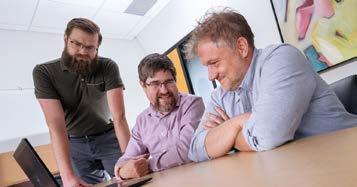
and his grad student Spencer Eiting (left) were part of a first-of-its-kind brain stimulation therapy to help a Minnesota man (unidentified, per request) overcome severe depression. See: z.umn.edu/discoverymag
Patients with simulation implants could someday customize the charge that hits their body.
“Electrical stimulation is a pulse of electricity,” said Tay Netoff, biomedical engineering professor who directs the University of Minnesota Center for Neuroengineering. “When we deliver it, we can change the amplitude or the voltage, the width of the pulse, and the frequency. If we just select those three parameters, there are millions of possible settings.”
Netoff and his team have been building a sophisticated model to narrow those settings for individuals, by capturing data on how the brain responds to stimulation across ailments.
“What we’ve done in the past is pick a setting and fix the pulse and frequency, and then when the neuromodulation device gets used for, say, Parkinson’s or epilepsy, we have one setting we hope works for most people,” he said. “But we’re now starting to move into the era of being able to record brain activity and seeing how that individual brain responds to the stimulation.”
So instead of one-size-fits-all, neuromodulation of the future for pain, movement disorders, and neurological disorders is giving way to a Netflixlike system—one that can offer recommendations and enhance user experience, Netoff said.
2024
With M Physicians Interventional Psychiatry Clinic, Professor Tay Netoff identifies neuromodulation settings for patients with treatmentresistant depression.
2023
Netoff joins a Hennepin County Medical Center spinal cord implant study, where all 20 paralyzed patients see benefits; one moves her legs after 23 years.
2021
UMN neurosurgeons are using Netoff’s algorithms in a five-year, $2.2 million National Institutes of Health study to optimize deep brain stimulation for epilepsy.
2018
Netoff is part of the E-STAND study using epidural spinal cord stimulation to restore function in those with complete spinal cord injury and paraplegia.
“We want to tune it not only to make it personalized,” he said, “but personalized for what a patient wants. With spinal cord injury, for example, this could be bladder function for one person or leg movement for another.”
Professor Jian-Ping “JP” Wang, the Robert F. Hartmann Chair in Electrical and Computer Engineering, is developing nanomagnetic materials and quantum spintronic devices for both precision and personalized medicine. MagPatch is one example. Under Wang’s guidance, Renata Saha (EE Ph.D.’23; now DuPont scientist) led the construction of microcoils that can emit a magnetic charge on individual neurons. The impact is promising for vagus nerve stimulation.
Emad Ebbini, professor of electrical and computer engineering, is a leader in transcranial focused ultrasound (tFUS). His team has developed a dual-mode technology to treat atherosclerosis—one that combines ultrasonic sound waves to form an image and guided thermal therapy to stimulate the nerves. Minnesota startup International Cardio Corporation licensed his technology in 2011. Ebbini continues to refine tFUS for other tissue deformities.
And, monkey brains!
Associate Professor Hyun Soo Park is partnering with the Minnesota Zoo and neuroscience colleagues in the medical school to 3D motion capture snow monkeys in order to better study how their movement and social behavior relates to brain activity.
The research opens new opportunities to study early behavioral markers for autism, schizophrenia, and obsessive-compulsive disorder in humans.
“Monkeys have a lot of similar behavior to humans—their social behavior, their individual social interactions with others, their interacting with objects—so there are a lot of things that we can study,” Park said.
3,4,5
Renovation is underway on the third to fifth floors of Shepherd Labs, where Park’s computer science team is located
64
Number of cameras the team used to capture limb and joint motion then 3D construct a study environment

Origami, for many people, evokes images of folded paper art like cranes or sharply angled boats. For University of Minnesota engineering Professor Richard James, however, origami is a world of mathematical calculations that can be applied to design problems in fields ranging from architecture to aerospace to medical devices.
“The classic application of origami design is in space structures,” said James, a McKnight professor in aerospace engineering and mechanics. “You have structures, like solar cells, that you want to deploy into space. You have to fit them inside a rocket so they take up the least amount of space. One solution? You fold them.”
“
It’s truly a mixture of math, science, and art.
—Richard James
James recently taught a graduate course on origami engineering and has published several papers on the topic. But it’s his research into a
subfield known as curved origami, which can produce undulating and even spherical forms, that has attracted attention from around the world. In 2022, Eckhard Quandt, vice president for research at Kiel University in Germany, approached James about using curved origami to design stents used to treat brain aneurysms.
Aneurysms are tiny bubbles or bulges that develop in people’s brains as they age, appearing in areas where artery walls are weak or thin. When an aneurysm bursts, it may result in a stroke or brain damage. To reduce the risk of a rupture, surgeons often install a small mesh tube, known as a stent, that reinforces the artery walls.
But installing a stent, via the carotid artery, is tricky. Usually crimped so it’s small enough to fit through a catheter, the device must expand and position itself correctly once it reaches the desired location. What’s more, stent design is often patientspecific—the shape and size of the device must be tailored to address the nature of the aneurysm.
James, whose research focus is phase-change materials, collaborated
A catheter holding the compressed stent is threaded through the artery. Once the stent reaches the aneurysm, it unfolds like origami.
The entire aneurysm is filled with a stent to reduce risk of rupture
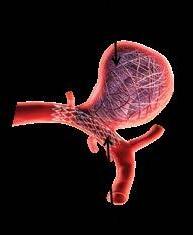
The aneurysm becomes isolated from blood flow. It shrinks but does not die.
closely with aerospace engineering and mechanics graduate student Huan Liu to address Quandt’s request. Together, the pair produced a design for an origamiinspired implant made of thin-film shape memory alloy. In compressed form, the tiny structure can be forced through a catheter and into position; however, once lodged in place, reacting to body heat, the stent unfolds and resumes its original form. What’s more, curved origami engineering allows for considerable variation in stent design, resulting in devices that match patient needs. Quandt is currently building several prototypes from James’ and Liu’s design.
The pair have experimented with curved origami applications in other fields, too.
Liu, who recently accepted the prestigious Drinkward Postdoctoral Fellowship at the California Institute of Technology, has leveraged her knowledge of curved origami to design high-performance vertical-axis wind turbines, long seen as a failed technology. Last year, she and James applied for a patent on the design and launched a company, WhirrlEnergy, to further the endeavor.
The potential benefits of mingling origami engineering seem to be endless, James said. But even when it’s applied to research, origami remains beautiful and fascinating.
“It’s truly a mixture of math, science, and art,” James said. —BY
JOEL HOEKSTRA
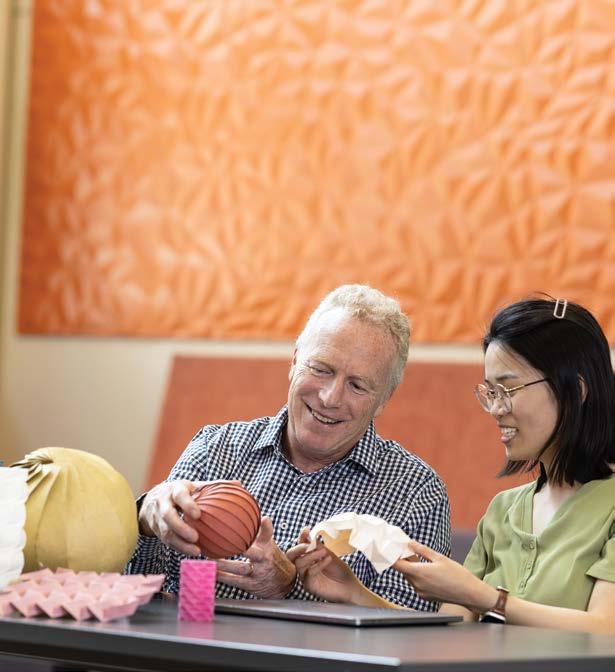





The Minnesota Funeral Directors Association licensed technology from the Bakken Medical Device Center Innovation Fellows program to prevent mercury dental fillings in cadavers from being incinerated during cremation.

For a final project, recent graduates Zach Blonz, Emily Chu, Nicole Mertens, Alexi Seplak, Terry Sullivan, and Thomas Younger designed a device to remove cornea sutures.

Paulina Eberts, a Ph.D. candidate co-advised by Professors Samira Azarin and Casim Sarkar won a UMN Three Minute Thesis competition for “Decoding Blood-Brain Barrier Dysfunction in Alzheimer’s Disease.”
Read more.
Associate Professor Stephen Guy was on a team whose findings helped people with facial paralysis rediscover or relearn movements and expressions they might have lost.
High-speed jet propulsion expert Paul Strykowski teamed up with a University of Minnesota surgeon on research that examined air flow in children pre- and postcleft palate.


Assistant Professor Brittany Hartwell’s lab develops and refines nasal vaccine technologies that can bypass mucosal barriers to better activate immune protection.
Assistant Professor Judy Yang uses her knowledge in microscale transport processes to study the flow and impact of bacteria in lung infections.
As an intern with Starkey Hearing Technologies, alumnus Tanmay Agarwal built a robot to automate a hearing aid verification procedure. The work earned him a spot on WayUp’s Top 100 interns— and inspired his own robotics startup.
Fluid mechanics studies in Assistant Professor Jeff Tithof’s lab include simulating blood flow in the liver to improve outcomes for cirrhosis patients.



ARMS ARMS

The work of University of Minnesota College of Science and Engineering faculty, students, and alumni impacts almost all parts of the human body. Here are a few examples we found. ››
Associate professor Zhi Yang is developing implantable neuro-electronics that help amputees regain limb function. See video: z.umn.edu/robotic_arm


Professor Dan Knights is one of the most cited gut bacteria researchers on the planet. He has found that our gut bacteria may affect diabetes, obesity, and other chronic diseases.

Alumnus Gerry Timm went from researching pelvic organ problems caused by spinal cord injury and stroke to developing devices for diagnosing and treating urinary control and erectile disorders.
LEGS LEGS
Assistant Professor Rachel
Humann studies ways to better control artificial limbs. Her goal: robotic prosthetic legs with natural gait and speed.


Professor David Wood’s lab works on sickle cell anemia, a genetic blood disorder that primarily affects people of color and hits places where malaria is endemic.
Assistant Professor Kyoko Yoshida looks at how the uterus adapts during pregnancy. She and her student researchers also partner with a local Minneapolis school for pregnant and parenting youth, inspiring them to pursue STEM fields. UMN’s Student Parent Help Center is the longest-standing program for student parents in the United States.
Shoe implants to treat balance issues in Parkinson’s disease patients? Yes, thanks to research by alumna and former Gopher hockey player Cara Herbers.

$26 million
Grant to establish ATP-Bio as an NSF Engineering Research Center, led by Professor John Bischof to advance cryopreservation
$3.7 million
U.S. Department of Defense grant for Tranquillo lab to prepare clinical trials of bioengineered heart vessels
$1.3 million
Minnesota Partnership for Biotechnology and Medical Genomics grant to UMN-Mayo to develop an organoid center
BY PAULINE OO
In the field of regenerative medicine, Professor Brenda Ogle is one of the best in the country. She and her team of researchers garnered global attention for creating a high-tech patch that helps scarred cardiac tissue heal after a heart attack.
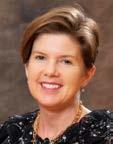
3
Ogle (left) holds two advanced degrees from the University of Minnesota College of Science and Engineering and heads the Department of Biomedical Engineering (BME). She also knows how to reprogram stem cells into heart muscle cells.
Lab rotations for biomedical engineering students in the department’s cardiovascular engineering training program
However, what landed her lab on the cover of the American Heart Association’s Circulation Research journal was a method that mixed human stem cells with an “ink” made from extracellular matrix proteins to 3D print a chambered structure. In less than a month, this model beat just like a human heart.
Ogle credits the Visible Heart Laboratories (VHL) for the MRI scan that shaped the structure. The lab was established 25 years ago by Paul Iaizzo, a BME graduate program faculty advisor, in collaboration with Medtronic.
“He’s created a really nice library of MRI heart scans and pig and human heart tissue,” Ogle said. “We’re grateful to have ongoing access to this anatomic
10
CSE researchers on the 17-person team that developed lifelike artificial organ models for surgery practice
2021
Biostasis Research Institute funds the UMN Organ and Tissue Preservation Center to advance cryogenic banking

The Visible Heart Lab operates in the same Twin Cities campus space where surgeons and engineers perfected pioneering cardiovascular technologies, like the world’s first portable pacemaker.
library. We used it as digital templates for our centimeterscale human heart pump. That study received the best manuscript of the year in a high-profile journal in the cardiovascular space.”
Cardiac ablation is another resource Ogle taps in the VHL.
“Ablation is used to literally ablate or kill cardiac tissue in people with atrial fibrillation,” she explained. “These devices have been around for a long time, and they work. But sometimes irregular heart rhythms or arrhythmias come back, and we really don’t understand why and under what conditions.”
The procedure involves guiding a catheter with electrodes through a vein or artery to fix a heart that either beats too quickly, too slowly, or irregularly.
“Our 3D model allows us to see
what happens at the cellular level— why some cells are not killed and continue to beat irregularly,” Ogle said. “Our model is living. It’s human. And it’s cardiac muscle that can be studied over time after the ablation procedure.”
The recently published study and subsequent efforts in this space are putting Minnesota on the map.
“The development of human model systems to complement animal models that have been developed in the VHL creates a strong platform for evaluating therapies before they reach the clinic,” Ogle noted. “It makes Minnesota an incredibly strong ecosystem for preclinical testing because we have animal models, reanimated human models that can last a day, and human models in a dish that can be sustained for days, weeks, and months.”
Today’s organ transplant system prioritizes those who need an organ most urgently. Industrial and Systems Engineering Assistant Professor Saumya Sinha’s work focuses on optimizing this system. Most recently, fairness and equity around organ transplants has been part of her work.
“If no transplant hospital is nearby when a deceased donor organ becomes available, that organ is wasted,” she said. “Equally, some areas of the U.S. do not have any transplant hospitals, so a patient in those areas might not have access to a life-saving transplant.”
Studying these scenarios and their outcomes promotes a transplant system that is geographically and socioeconomically equitable.
—BY EMILY RICE
Read the full story: z.umn.edu/Sinha-focus
$6.7
NIH grant to advance cell and tissue imaging, plus find barriers to anti-tumor immunity million
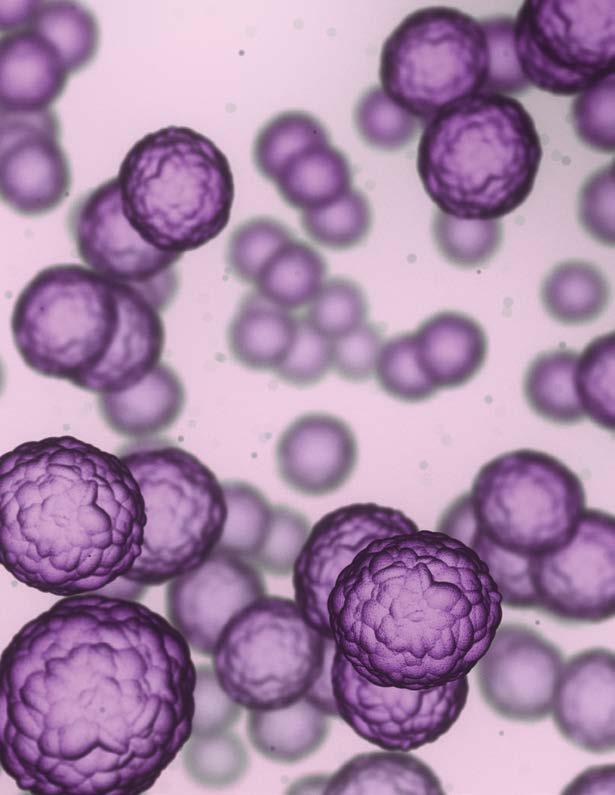
2nd
Cancer is the second leading cause of death in the U.S. after heart disease
NIH grant to engineer T-cells and pioneer a simulator that predicts tumor progression and expedites new cancer therapies
BY PAULINE OO
The new Cancer Bioengineering Initiative (CBI) has one goal: to double the success rate of clinical trials in the next 10 years. This initiative includes partners from a variety of backgrounds—they are engineers, statisticians, chemists, biologists, immunologists, geneticists, oncologists, and even dancers who can model cell movement.
“Currently, more than 95 percent of drugs brought forth in clinical trials to treat cancers fail,” said Paolo Provenzano, who co-leads the initiative with biomedical
engineering colleague David Odde. “We believe that this is in part due to the lack of integrated engineering design principles in that process, whether that be more rigorous technologies or applied mathematical formulations.”
While engineers are driving product development in hightech industries, they’re largely absent from clinical science. The researchers in CBI are on a mission to change that. They are borrowing from the tech world, which uses computational prototyping to
kan(t)-sər
(noun) Something evil or malignant that spreads destructively
$9.6 million FIELD NOTES
build and refine everything from computer chips to medical devices.
“At each step, we’re looking at that data to try to figure out what is working and what isn’t for each patient,” Provenzano said.
Nearly eight years ago, Odde led a ground-breaking study on the physics of cancer cells that showed how cancer cells move relative to their environment—stiff (bone tissue), soft (fatty tissue), and medium stiffness (muscle tissue).
Cancer in dogs
Electrical and computer engineering Professors Rhonda Franklin and Beth Stadler are working with veterinary medicine colleagues to leverage magnetic nanowires to detect canine cancer cells using a system similar to RFID. The research holds potential for human cancer treatment, too.
by Scott Streble
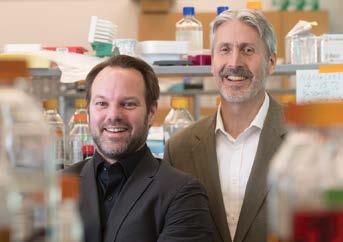
“
I don’t see it as a competition; I see it as a street fight.
—Paolo Provenzano
The discovery underlies CBI’s work today.
“Cells are a little like the storybook character Goldilocks,” he explained. “They don’t like their environment too hard or too soft—it needs to be just right or they won’t move. If we can trick cancer cells into believing it is not a good environment for migration, we can prevent the cancer cells from spreading.”
Nanotech and ovaries
Samira Azarin, associate professor of chemical engineering, received $100,000 from the Minnesota Ovarian Cancer Alliance to design biomaterials that work with ultrasound to destroy ovarian tumors.
More than $20 million in National Cancer Institute funding support the Initiative’s four focus areas: biophysics-based mathematical modeling, microfabrication, live-cell imaging, and genome engineering.
“For me, this research is very personal. It’s impacted my life and my family greatly,” Provenzano said. “I once had a colleague tell me he wasn’t sure where the professional and personal lines blurred in my research. He felt like sometimes I was competing with cancer. I told him I don’t see it as a competition; I see it as a street fight. If we fight hard, I believe we can move the dial and make a difference.”
⊲ Watch videos to learn more: cancerbioengineering.umn.edu
Industrial and systems engineering
Professor Jean-Philippe Richard and Ph.D. graduate Nasim Mirzavand Boroujeni are refining brachytherapy, specifically studying how to best place needles inside of 3D-printed masks to target skin cancers on the face.
In “bodystorming,” movement isn’t just about getting from one place to another. The dance technique developed nearly 16 years ago by biomedical engineer David Odde and University of Minnesota professor and choreographer Carl Flink is a visual way to model how cancer cells move in the body.
This collaboration between dancers and scientists is ongoing. Dancers even simulated cancer cell movement at a recent Cellular Cancer Biology Imaging Research annual meeting.
⊲ Watch a TEDMED talk by Odde and Flink’s Black Label Movement dance company: z.umn.edu/TED-bodystorming
⊲ Bodystorming explained: z.umn.edu/dancewebsite
by


The good news: In the fight against cancer, new therapies break through at an impressive clip.
The bad news: Only a minimal percentage of these promising avenues receive FDA approval.
The Therapy Modeling & Design Center (TMDC) in the College of Science and Engineering is hoping to rectify this problem. It’s using mathematical modeling to, among other things, test the viability of cancer therapies.
Professors Jasmine Foo (mathematics), Kevin Leder (industrial and systems engineering), and David Odde (biomedical engi-
neering) spearhead the interdisciplinary initiative launched in winter 2024.
“We’re interested in how new therapies that are being developed could be more effective and likely to be successful when they go into clinical trials,” Odde said.
“Understanding the therapy in the context of the disease, and possibly on a patient-by-patient basis, is a large unmet need in the field.”
In addition to this “unmet need” related to drug therapies, mathematical modeling can address a variety of other aspects
of cancer research, including the mechanisms by which tumors propagate and the selection of optimal patient populations to test drugs.
Because mathematical models are digital captures of real-world phenomena, researchers can use them to simulate various what-if scenarios quickly. The alternative, relying on lab-based cell culture experiments, takes much longer.
“If I have a hypothesis about how a particular gene is impacting cancer progression, for example, but don’t know if that’s true,
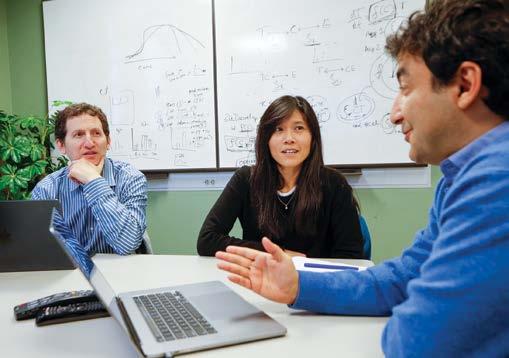
mathematical modeling is one less time-consuming way to help with that process,” Foo said.
The TMDC got its start when Foo and Odde started discussing their mutual interest in using mathematical modeling to study cancer and biological systems. TMDC was made possible by funding
“We’re in an age of team science.
—Jasmine
Foo
from the College of Science and Engineering and the Masonic Cancer Center. In addition, critical grant writing support is provided through the Institute for Engineering in Medicine’s Center Accelerator program and the Cancer Bioengineering Initiative.
“Making a difference on this disease was a goal for both of us,” Foo said.
The interdisciplinary founders also knew the robust startup ecosystem at the University of Minnesota (and in the rest of the state) could benefit from the center’s expertise.
The center is working with therapy developers—many are based in the University’s Medical School— to troubleshoot and fine-tune implementations. An especially exciting project on the docket is gene-editing a patient’s own immune cells and using them as a therapeutic agent.
While not an immediate focus, personalized medicine is also on TMDC’s radar.
“We’re making important advances toward that goal. Each person is different, and we can encode those differences mathematically and be able to better identify the right patients for the right therapies,” Odde said.
The TMDC’s larger goals are ones shared by all initiatives in oncology.
“We are trying to contribute to a larger effort of improving cancer outcomes and optimizing the pace of development of the therapies we have,” Foo said. “What’s novel about our approach is the mathematical modeling perspective. We’re in an age of team science. We’re contributing a different perspective to the overarching collective team goal of delivering progress in oncology.”
Odde agrees that success would have a major impact for cancer patients.
$30 million
Total grants awarded to UMN Cancer Bioengineering Initiative in the last 10 years
$3 million
Multi-institution study on how tissues and organs form includes Professor David Odde’s work on the shape of brain tumors
12
Therapy and modeling collaborations across industry and academia
“If our efforts are successful, that would mean the success rate in clinical trials will be higher,” Odde said. “That means the cost per new therapy that comes on the market might be lower. I hope we can bring down the cost and make more therapies available to more people through mathematical modeling. That could ultimately save lives.” —BY POORNIMA
The human carcinoma cell line is key in many studies worldwide. It hails from the cells of unwitting donor Henrietta Lacks in 1951
Statistics & Simulations
APTE

are essential, particularly in early-stage cancers, because many don’t show symptoms. Consequently, doctors often rely on predictions to decide if a patient needs treatment
Read more.
For engineering students in their final year, the senior design course represents a culmination of their college classes and a launchpad to their careers. Students work in teams to develop a product or process to address a specific need brought forth by a project sponsor (either a faculty member, practicing engineer or clinician, or local company).
For the sponsor, a capstone project is more than an opportunity to fix a problem. It’s a chance to broaden a student’s mind.
“At this point, they have the competence to design a product based on what I explain to them,” said Stephen Contag, a University of Minnesota physician
who mentors biomedical engineering seniors. “But they don’t fully comprehend the product until they build it and see how it can be used.”
Depending on their major, students work on the problem and the proposed solution over one or two academic semesters. “Seeing our months-long hard work pay off was gratifying,” said Ann Nguyen, now a Boston Scientific engineer, of the prototype they built for Live On Minnesota, the startup aiming to become the state’s first homegrown provider of natural organic reduction—also known as “human composting.”
This senior project, and two others, caught our eye.
The challenge
Fetal heart rate monitoring is a critical technique that offers clues to a fetus’s well-being. It has also been credited with reducing the number of stillbirths since its invention in the 1930s. Yet, two challenges exist: reliably capturing cardiac signals when the fetus moves and adjusting the simple, inexpensive but cumbersome, ultrasound transducer’s elastic band on a pregnant belly.
The team
BME ’24: Niyati Alluri, Sydney Beck, Maya Johnson, Allison Lundborg, and Daniel Russell
The sponsors
Stephen Contag, physician, UMN Division of MaternalFetal Medicine
Shruti Iyer, director of product strategy, Oracle
The solution
“FetalFocus,” an ultrasound transducer positioning aid that allows the physician to better place and consistently track the fetal heart rate.
“A game-changing product for OBGYN clinicians, pregnant mothers, and babies.”
—Shruti
Iyer, industry advisor
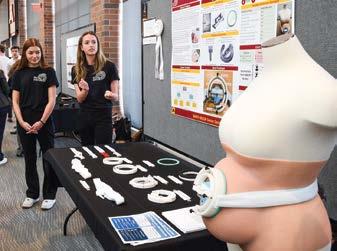
by Pauline Oo

The challenge
Conventional burials account for 64,000 tons of steel, 1.6 million tons of concrete, and 4 million gallons of embalming fluid annually in the United States. Cremation, by contrast, releases a yearly carbon output equivalent to burning roughly 400 million pounds of coal.
The team
ME ’24: Hung Dinh, Conner Glaser, Ann Nguyen, Jacob Schmidt, and Jenna Westlake
The sponsor
Erik Halaas, owner, Live On Minnesota
The solution
The “Human Composting Vessel” breaks down the body into inorganic material, offering an environmentally friendly alternative to traditional burial and cremation.
“I thought people would avoid such a morbid topic, but they expressed excitement about having a greener alternative to burial and cremation.”
—Ann Nguyen, team member
The challenge
Your chance of skin damage scales up with the intensity of UV radiation and duration of exposure. Also, prolonged exposure can contribute to eye damage, including cataracts. Current UV monitoring products run in the $200+ range, plus they’re large, clunky, and not user friendly.
The team
EE ’24: Hunter Berger, Andy Lambrecht, Maximilian Percy, Jedidiah Pratt, Joseph Renk, and Peter Tran
The sponsor
Hye Yoon Park, associate professor of electrical and computer engineering
The solution
“SunGuard,” a UV-level detector and app that could integrate into existing smart watch designs. The team’s prototype watch and app, built with electronics and parts totaling $53.38, features real-time UV tracking and a sunscreen timer. A “SunGuard Clip” that fastens to shirts and hats was discussed.
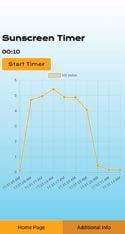
“This project enabled us to see the full lifecycle of a product from the brainstorming to fabrication.”
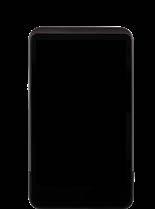


—Peter Tran, project lead
It’s a great recruiting tool. Students get to know your company and the products you make or the services you offer. It incentivizes them to want to look for jobs at your company.
It’s a way to get creative design solutions. New brain power thinks about problems for you, and good ideas come out of it.
For info on partnering with us, contact CSE Corporate Relations at 651-329-2234 or bunt0051@umn.edu
Stephen Richardson, UMN cardiac anesthesiologist, sees a need for a low-cost ventilator. His design doesn’t require pressurized oxygen or air supply. Instead, it uses “Ambu” bags that paramedics employ to manually resuscitate patients. His friend Jim McGurran, who works for MGC Diagnostics, brings the idea to life in a red toolbox.

The next day (March 16, 2020), Richardson meets Art Erdman, founding director of the Earl E. Bakken Medical Devices Center (BMDC) that’s part of the UMN Institute for Engineering in Medicine (IEM).
“He needed some 3D-printed components,” Erdman said. “He also brought down some other M.D.s who were on the ECMO [extracorporeal membrane oxygenation] side of things.”
Erdman gathers his lab supervisors—thenmechanical engineering students Aaron Tucker (Ph.D. ’23), Steve Thomalia (Ph.D. ’20), Cara Piazza (Ph.D. ’23), and John Huss (Ph.D. ’19)— plus medical doctor Enio Perez, who was enrolled in the BMDC Innovation Fellows Program.
Their mission:
⊲ How do we convert this toolbox into an FDA-approved device?
⊲ How can we scale up production, as fast as possible?
⊲ How do we set up a supply chain for all the components?
Tracing the Coventor’s Minnesota Me
Prof. Hubert Lim is current BMDC director.
$300,000 in donations
Tucker spends 30 days making five prototypes and running the more advanced models through six clinical tests with the medical school.
rapid flow through our dTech machine
* Editor’s note:
The COVID-19 pandemic fast-tracked the process for this emergency, rapid-deployment ventilator system.
650+
individuals and companies offered to help
“We got some publicity locally in the Star Tribune, KARE 11, and other local television stations. As soon as that happened, everyone said, ‘What can I do?’” —Art Erdman
More than 100 open-source files ordered worldwide (z.umn.edu/cov-license). Nonprofit Scalpel at the Cross uses it in Peru, Honduras, India, and Guinea.
FDA APPROVAL
On April 14, 2020 the U.S. Food and Drug Administration grants Emergency Use Authorization.
Major industry partners:
⊲ Boston Scientific Corp.
⊲ Protolabs
⊲ United Health Group
The BMDC team, Richardson, and the UMN Office of Technology Commercialization (OTC) meet with industry partners.
⊲ Medtronic
⊲ Teknic, Inc.
⊲ Digi-Key
⊲ MGC Diagnostics
⊲ Appareo
⊲ OTC prepares an open-source license.
⊲ Boston Scientific agrees to manufacture 3,000 models and sell at-cost for about $1,000 each.
⊲ United Health Group donates units to the U.S. Strategic National Stockpile and organizations serving South America, Central America, Africa, and Asia.
⊲ Appareo makes 3,000 units for use in North Dakota.
Within two weeks, 70 volunteers—CSE undergrads already familiar with the 9,000 sq. ft. BMDC facilities—built the first 25 units there.

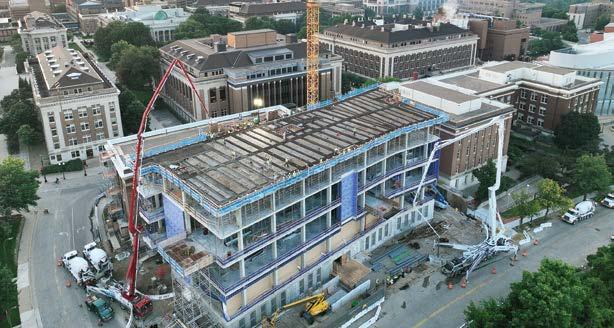
In a story of dedication to education and a shared love of science, University of Minnesota alumni Françoise deRochefort Thompson, a retired French and Spanish teacher, and her husband, Thomas “Tom” Allen Gregory, a 1964 chemistry graduate, have made a transformative donation to enhance undergraduate chemistry education at the University of Minnesota.
Their generous contribution to the reimagination of Fraser Hall will be recognized with the naming of the second level. The Gregory Thompson Floor will house seven of the new building’s 18 chemistry undergraduate
teaching laboratories. The donor requested the amount of the gift not be disclosed.
Born in France, Françoise, who holds a master’s degree in French from the University, spent years teaching French and Spanish in secondary school and believes “language opens your mind to the world.”
In addition to her passion for French, literature, and the arts, Françoise’s favorite subject in high school was chemistry. This early interest in chemistry was rekindled when she met her husband, a brilliant scientist

Françoise deRochefort Thompson and Thomas Allen Gregory’s names will welcome students and visitors to Fraser Hall’s second floor when renovations are complete.
whose groundbreaking patents, inventions, and articles earned him international recognition. After receiving his undergraduate degree at the University, he went on to earn his Ph.D. in chemistry from Notre Dame.
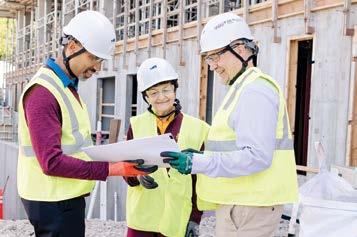
“Tom had a chemistry lab in his childhood home,” Françoise said. “His field was physical chemistry, which is very mathematical. I keep finding his equations around the house. Tom was meticulous in his research. I don’t think it was ever really a job. It was what he loved.”
Françoise recalled returning to the University with Tom when he completed postgraduate work in the labs. With these cherished memories in mind, she keeps her focus on the next generation of scientists and their contributions.
“I want to provide opportunities for students and support their future,” she said. “The students are what’s most important.”
The Chemistry Undergraduate Teaching Laboratories building is designed to support collaborative learning, encourage problem solving, and foster community. The State of Minnesota funded two-thirds of the Fraser Hall renovation with an investment through the University. Françoise’s gift and leadership commitment provides a
strong foundation, contributing to the remaining one-third of the project’s expenses, which the College of Science and Engineering must cover.
The gift’s impact is already resonating with the community. Students and faculty are eagerly anticipating the opening for fall 2025 classes.
“The updated building and its chemistry labs will formalize a shift in teaching and learning outcomes that have been underway for some time,” said David Blank, CSE associate dean for undergraduate programs.
A current University Medical School student, Elise Toussaint, is also among those grateful for the new building. She was one of the many undergraduates on the Twin Cities campus who used old chemistry lab spaces each semester. “I think it’s encouraging that people beyond campus see the importance of this and want to support us in being able to do the best that we can in our fields,” she said.
—BY KRISTIN KELKER
Interested in learning more or making a gift to support the undergraduate chemistry experience? Go to cse.umn.edu/chemlabsbuilding or email Justin Miedema, assistant dean for advancement, at jmiedema@umn.edu.
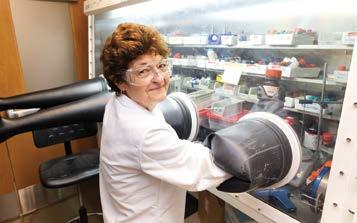
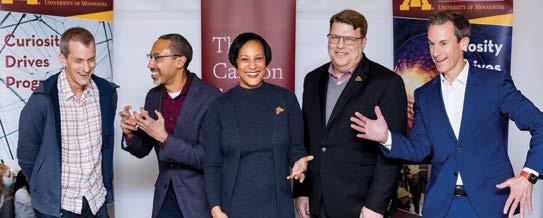
Movers and shakers come together: CSE Dean Andrew Alleyne (second from left) co-hosted a thought-provoking conversation on “Harnessing the Power of AI” with Carlson School Dean Jamie Prenkert (second from right) in Palo Alto, Calif. The March event drew nearly 100 alumni, friends, and prospective students. Nicole Graves (center), Global People Leader at Apple, moderated the University of Minnesota alumni panel, including Google Chief Scientist Jeff Dean (left, CSci ’90) and Tableau President and CEO Ryan Aytay (right).
Each event is an opportunity to get inspired and learn. Mark your calendar to join us on campus or at an upcoming regional gathering: cse.umn.edu/events. In the meantime, check out some highlights from 2024:
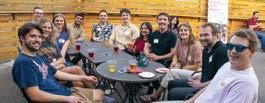
Alumni, faculty, and staff reconnected at the second annual CSE Summer Social at Minneapolis Cider Company in August. The gathering was a celebration of innovation, community, and the journey from classroom to career.
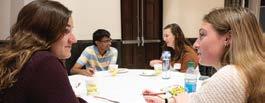
CSE matches sophomores, juniors, and seniors with industry professionals who provide valuable career insights and strategies. Last year, the CSE Mentor Program had the largest number of mentoring pairs at the University.
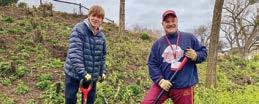
Alumni, students, and faculty assisted the Bakken Museum with spring cleaning and preparing educational outreach materials. Freshman Colin Snustad joined his dad, Eric (AEM ’94; CSE Alumni Board), in removing buckthorn.

Paige Novak (second from right), head of the Department of Civil, Environmental, and Geo- Engineering, shared her efforts to create a more climate-resilient world at an alumni gathering in Scottsdale.
The Stanley and Hazelle Gordon Scholarship in Chemical Engineering and Materials Science was established early this year. Alec Schwendinger, a double major in chemical engineering and chemistry, is the inaugural recipient. Read more about the donors behind this fund, and their connection to Little House on the Prairie, at z.umn.edu/3generations.
“This is just a small token of the gifts I have received over the years [from the U].”
—Stanley “Stan” Gordon (ChemE ’61), who passed away in July 2024
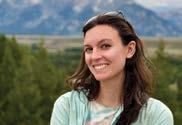
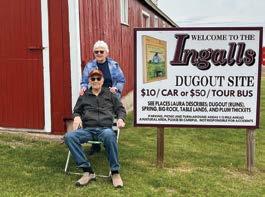
Kenna McRae, a biomedical engineering Ph.D. student and 2024-25 Lawler-Pray Family Fellowship recipient, returned to Minnesota to focus on neuroengineering. “There’s a plethora of research that’s translational in this area—people working to get devices from the lab to patients—and the U is particularly strong with that,” she said. Donor-supported fellowships make a huge difference for students starting a graduate program, she adds. It offers a security net so students can focus on what matters most: the research.
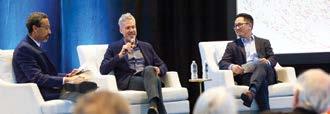
Hubert Lim (right), professor of biomedical engineering and director of the Earl E. Bakken Medical Device Center, and John Osborn (center), director of the Minnesota Consortium for Autonomic Neuromodulation, spoke about how vagus nerve stimulation could be used to improve human health. Inspired by the program, alumni Marita Heath and Paul Overbeck made an estate gift to help fuel this innovative research.
“We are thrilled to support the collaboration of engineers, scientists, and physicians in advancing medicine and improving human health.”
—Marita Heath (ChemE ’76) and Paul Overbeck (Chem ’77)
Your generosity will support students, faculty, and research. Here are some ways to give that provide you with tax savings:
• Give appreciated assets: Donate securities, such as stocks, bonds, or mutual funds, that have increased in value.
• Give from an IRA: Individual Retirement Account owners 70 1/2 or older can make a tax-free gift.
• Make a gift that pays a fixed income for life: Contribute cash or appreciated securities to the University of Minnesota to fund a charitable gift annuity.
For more ways to give, email Justin Miedema at jmiedema@umn.edu or call 612-624-4318.
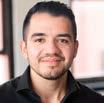
Efraín Torres, BME Ph.D. ’23
Co-founder (with Parker Jenkins, current Ph.D. candidate) • CEO
Innovation:
A novel magnetic resonance imaging (MRI) machine that uses a patent-pending approach called frequencymodulated Rabi-encoded echoes. By removing gradient coils, the founders can cut the MRI cost by approximately 30 percent, plus make it silent and smaller.
“Soon, it’ll be possible for MRI scanners to be wherever they’re needed— minute clinics, doctors’ offices, and even refugee camps. The University of Minnesota has a worldclass MRI center, with a history of groundbreaking innovations such as human fMRI, 7T MRI, and 10.5T MRI. This company’s success wouldn’t have been possible without the global leaders at UMN, like [med school] Professor Michael Garwood.”

Zeeshan Syedain, ChemE Ph.D. ’09
Chief Science Officer • Co-inventor of licensed technology • UMN Researcher
Innovation:
Bioengineered, labgrown pediatric heart vessels that grow with the recipients and enable children with congenital heart defects to undergo fewer openheart surgeries, using technology in Professor Bob Tranquillo’s lab.
“This is a groundbreaking discovery for the thousands of children born with congenital heart defects. I’m truly grateful to be on this journey from discovery to translation work, and now commercialization— with University of Minnesota resources key to each step.”
#1
GRAND PRIZE 2023 WALLEYE TANK COMPETITION
$1.5M
RECENT INVESTOR FUNDS TO BUILD OUT PROTOTYPE
90% WORLD POPULATION WITH NO MRI ACCESS
10
PATENTS GRANTED GLOBALLY ON BIOENGINEERED TISSUE
$10M RAISED FOR COMMERCIAL FACILITY AND CLINICAL TRIALS
5
END-STAGE RENAL DISEASE PATIENTS IMPLANTED; SUCCESSFUL DIALYSIS ACCESS
2023
MNCUP GRAND PRIZE RUNNER-UP AND GENERAL DIVISION WINNER
Innovation: A drinking nozzle that provides myofunctional therapy exercise, inspired by the didgeridoo (an Australian wind instrument) to strengthen the tongue and mouth muscles, leading to less snoring as well as improved breathing and sleep quality.
$15.3M
TM USES PROPRIETARY TECH TO STIMULATE THE SPLEEN
TOTAL SEED FUNDING FROM U.S. GOVERNMENT AGENCIES + POSITIVE RESULTS IN CLINICAL STUDIES OF RHEUMATOID ARTHRITIS
100,000
COVID-19 PCR TESTS PROVIDED ACROSS TWIN CITIES COMMUNITIES
40+
UMN GRADUATES EMPLOYED OVER THE YEARS
>95%
ACCURACY IN LESS THAN 90 MINUTES
HEALTHCARE PROFESSIONALS WHO USE AND RECOMMEND IT 93% OF USERS REPORTED LESS SNORING
Claire Kaiser, BME Ph.D. ’24 Co-founder • Technology Development Lead Engineer
Innovation:
SecondWave is pioneering a new therapeutic modality using noninvasive ultrasound as an anti-inflammatory treatment. Its home-use, wearable device—based on scientific discoveries from Professor Hubert Lim’s lab— delivers low-intensity, focused ultrasound to the spleen to reduce inflammation and help patients suffering from rheumatoid arthritis and other inflammatory diseases.
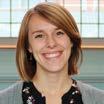
“It’s super rewarding to work on a device that could someday help people and increase their wellbeing. I discovered firsthand what’s needed for a device to be feasible at the University of Minnesota. I got the best of both worlds— academia and industry— during my time in CSE.”
Keping Song, ME M.S. ’13 Director of Quality and Engineering
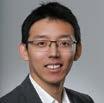
M.S. ’17

“The lightbulb moment happened when I saw my parents’ dog eating peanut butter out of a Kong toy. I thought, ‘What if we can get people to exercise without realizing they’re doing it.’
The University of Minnesota inspired me to build a startup and go after important health problems.”
Innovation: A bio-sensing device using Giant Magnetoresistance (GMR) technology to quickly and accurately measure disease or a health condition. The GMR technology was developed in Professor Jian-Ping Wang’s lab and transferred to Zepto.
“This technology has the potential to revolutionize how we diagnose and manage infection early, specifically fungal infections that lead to an estimated 1.5 million deaths per year. At UMN, I gained invaluable mentorship and insights, and learned what it means to be a true professional in the field.”
University of Minnesota
105 Walter Library
117 Pleasant Street SE Minneapolis, MN 55455
cse.umn.edu/linkedin UMNCSE
facebook.com/umn.cse @UMNCSE
youtube.com/umncse
cse.umn.edu/flickr

Students and faculty choose where they will study and work, and they consider the availability of scholarships, fellowships, research funding, and thoughtfully designed classrooms and labs.
Your generosity can help draw— or keep—them here.
by Grant Dahl